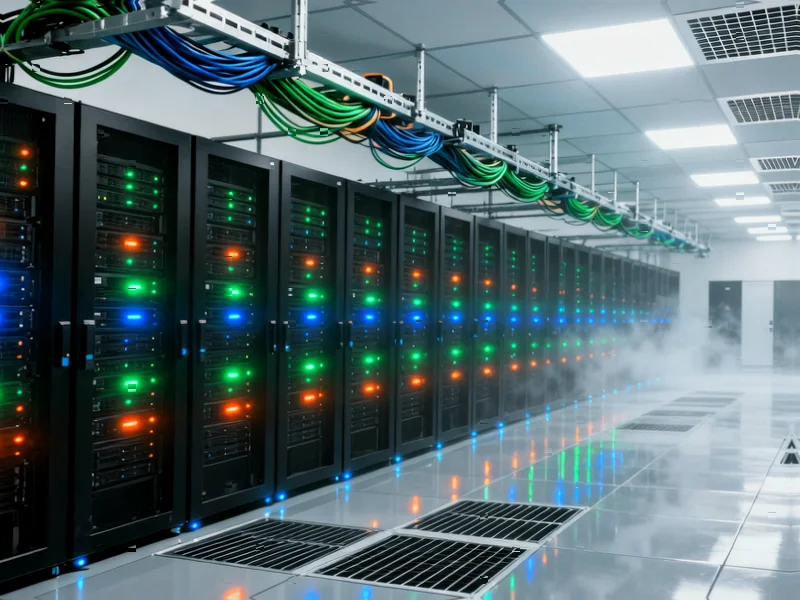According to Dark Reading, US energy regulators and analysts are demanding unified cybersecurity and physical security strategies for grid operators as threats escalate dramatically. Check Point Research found utilities experienced a 69% surge in weekly cyberattacks, rising from 689 attacks per week in H1 2023 to 1,162 in H1 2024, while the Electricity Information Sharing and Analysis Center reported physical attacks increased 71% in 2022 with 4,493 incidents recorded between 2020-2022. Black & Veatch’s industry survey revealed grid operators express equal concern over ransomware, malware, and cloud vulnerabilities, with substation attacks alone rising 50% in one year. The analysis comes as the Department of Energy allocated $45 million for energy security projects and FERC approved new standards requiring integrated cyber-physical monitoring. This convergence of threats demands immediate industry response.
The Technical Convergence Challenge
The fundamental challenge lies in the collision of three traditionally separate security domains: information technology (IT), operational technology (OT), and physical security systems. IT security focuses on data confidentiality and integrity through firewalls, encryption, and network monitoring. OT security prioritizes system availability and safety through industrial control systems (ICS) and supervisory control and data acquisition (SCADA) protocols. Physical security manages access control, surveillance, and perimeter protection. The convergence creates complex interdependencies where a breach in one domain can cascade across others. For instance, compromised physical access credentials could enable manipulation of OT systems, while network vulnerabilities might allow remote attackers to disable physical security controls.
Architectural Implications for Grid Modernization
Modern grid architecture compounds these challenges through distributed energy resources (DERs), smart meters, and remote operation capabilities that dramatically expand the attack surface. Traditional air-gapped systems are disappearing as utilities adopt cloud services, IoT devices, and wireless communications for efficiency gains. The technical implementation requires sophisticated network segmentation, zero-trust architectures, and unified monitoring platforms that can correlate events across IT, OT, and physical security domains. The Department of Energy’s $45 million security funding initiative specifically targets these architectural challenges, particularly for DER protection using zero-trust authentication frameworks that must validate both digital credentials and physical context.
The Human Factor in Unified Security
Organizational silos represent perhaps the most difficult technical hurdle. IT teams typically report through CIO organizations with cybersecurity backgrounds, while OT teams answer to operations with engineering expertise, and physical security falls under facilities or risk management. Each group uses different terminology, monitoring tools, and incident response procedures. Bridging these divides requires not just technology integration but cultural transformation. Security information and event management (SIEM) systems must be configured to ingest data from industrial control systems alongside firewall logs and physical access control systems, while security orchestration, automation, and response (SOAR) platforms need playbooks that address hybrid cyber-physical incidents.
Emerging Threat Vectors and Mitigation
The threat landscape has evolved beyond traditional cyber attacks to include sophisticated hybrid operations. Attackers now combine social engineering to gain physical access with malware designed specifically for industrial control systems. The Maryland substation plot investigation revealed attackers researching both physical security weaknesses and SCADA system vulnerabilities. Defending against these coordinated attacks requires advanced technologies like behavioral analytics that monitor for anomalies across digital and physical activities, drone detection systems for critical infrastructure perimeter protection, and secure remote access solutions that incorporate multi-factor authentication with geolocation validation. The technical implementation must assume breach and focus on containment strategies that prevent lateral movement between domains.
Regulatory and Compliance Complexities
The regulatory framework reflects this convergence challenge, with NERC CIP standards increasingly requiring integrated controls. However, compliance introduces technical complications as organizations struggle to map unified security controls across multiple standards. The implementation of CIP-015-1’s requirement for internal network security monitoring that includes physical controls necessitates sophisticated network architecture that can monitor industrial protocols while maintaining operational reliability. Organizations must deploy solutions that satisfy both cybersecurity frameworks like NIST and physical security standards while maintaining the real-time performance requirements of grid operations. This creates tension between security best practices and the deterministic timing needs of power distribution systems.
Future Outlook and Technical Evolution
Looking toward 2026, the industry must develop new security paradigms specifically designed for converged environments. This includes security platforms with native support for both IT and OT protocols, AI-driven analytics capable of detecting subtle attack patterns across domains, and automated response systems that can coordinate actions between digital and physical security controls. The technical roadmap should focus on developing standardized interfaces between traditionally separate security systems, creating unified threat intelligence feeds that include physical security indicators, and building resilient architectures that can maintain critical operations even during coordinated attacks. Success will require close collaboration between utility engineers, cybersecurity experts, and physical security professionals to develop solutions that protect against the evolving dual-threat landscape documented in the alarming attack statistics while maintaining the reliability that modern society depends on.




